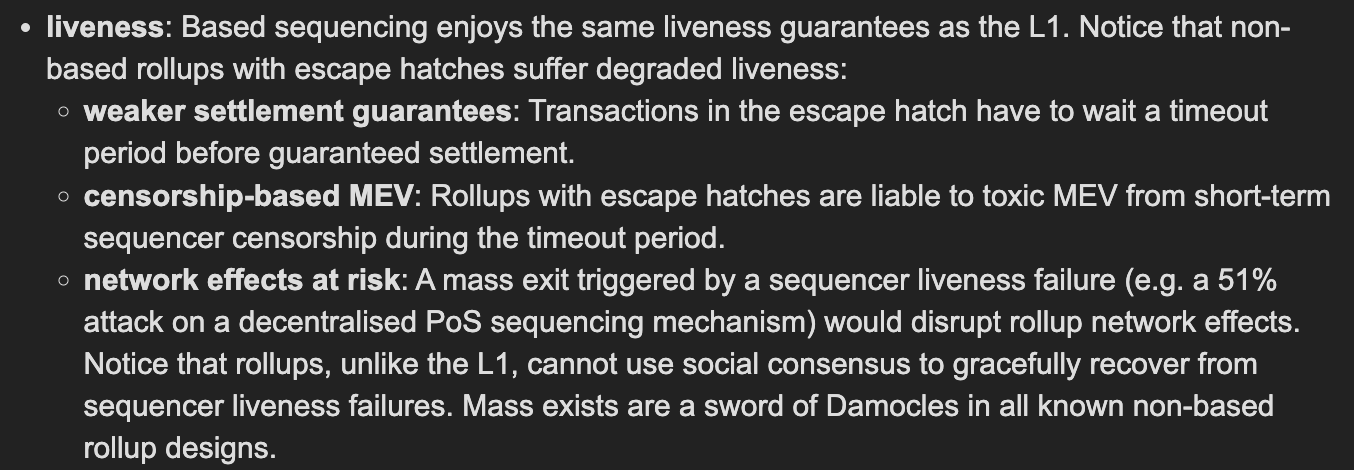I don’t see as using ETH for sequencing will improve censorship resistance. Could you explain in more detail?
The L1 serves as a inclusion list for rollups, to provide censorship resistance. Without based sequencing the best you can have is delayed forced transactions (aka an “escape hatch”). For example, on Arbitrum there’s a 24h delay between when a transaction is included on L1 (bypassing the Arbitrum sequencer) and when that transaction is forcefully executed on the Arbitrum execution environment.
With based sequencing there’s no need for a delay: if a transaction goes on L1 it’s safe to compel the next sequencer to execute the transaction by their slot, without delay. I explain in the original based rollup post (see here) why escape hatches are bad design:
